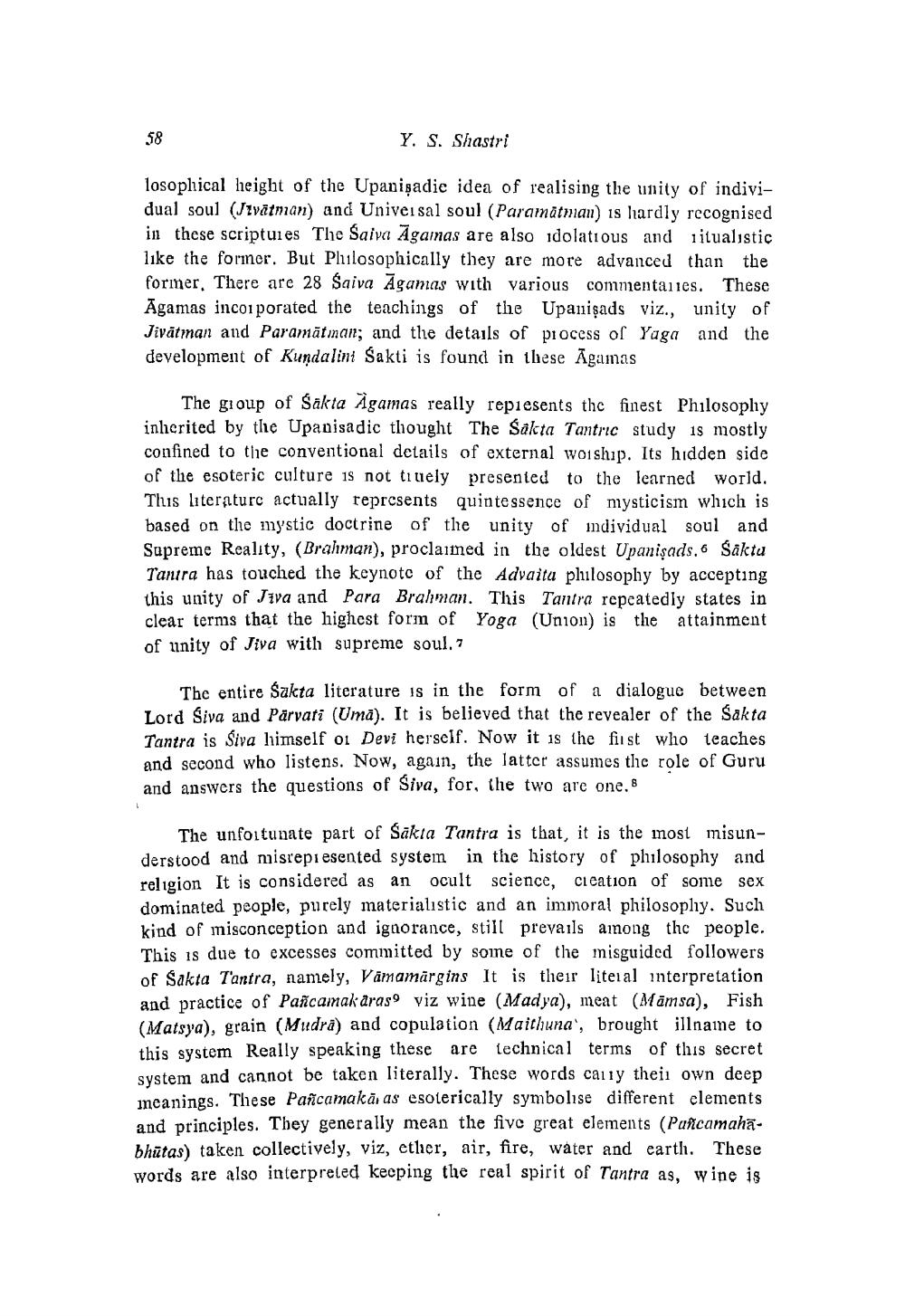________________
Y. S. Shastri
losophical height of the Upanișadie idea of realising the unity of individual soul (Jivātman) and Universal soul (Paramātman) is hardly recognised in these scriptuies The Saiva Agamas are also idolatious and itualistic like the former. But Plulosophically they are more advanced than the former. There are 28 Saiva Āgamas with various commentaires. These Agamas incorporated the teachings of the Upanişads viz., unity of Jivātman and Paramātman; and the details of process of Yaga and the development of Kundalini Sakti is found in these Āgamas
The gioup of Sākta Agamas really repiesents the finest Philosophy inherited by the Upaoisadic thought The Sakta Tantric study is mostly confined to the conventional details of external worship. Its hidden side of the esoteric culture is not truely presented to the learned world. This literaturc actually represents quintessence of mysticism which is based on the mystic doctrine of the unity of individual soul and Supreme Reality, (Brahman), proclaimed in the oldest Upanişads. 6 Sāktu Tanıra has touched the keynote of the Advaita philosophy by accepting this unity of Java and Para Brahman. This Tantra repeatedly states in clear terms that the highest form of Yoga (Union) is the attainment of unity of Jiva with supreme soul.?
The entire Sakta literature is in the form of a dialogue between Lord Siva and Pärvati (Uma). It is believed that the revealer of the Sakta Tantra is Siva himself on Devi herself. Now it is the first who teaches and second who listens. Now, again, the latter assumes the role of Guru and answers the questions of Siva, for, the two are one. 8
The unfortunate part of Sākta Tantra is that, it is the most misunderstood and misrepresented system in the history of philosophy and religion It is considered as an ocult science, creation of some sex dominated people, purely materialistic and an immoral philosophy. Such kind of misconception and ignorance, still prevails among the people. This is due to excesses committed by some of the misguided followers of Sakta Tantra, namely, Vāmamärgins It is their literal interpretation and practice of Pañcamak aras viz wine (Madya), meat (Mämsa), Fish (Matsya), grain (Mudra) and copulation (Maithuna', brought illname to this system Really speaking these are technical terms of this secret system and cannot be taken literally. These words cauy their own deep meanings. These Pañcamakäras esoterically symbolise different clements and principles. They generally mean the five great elements (Pancamahabhūtas) taken collectively, viz, ctler, air, fire, water and earth. These words are also interpreted keeping the real spirit of Tantra as, wine is




